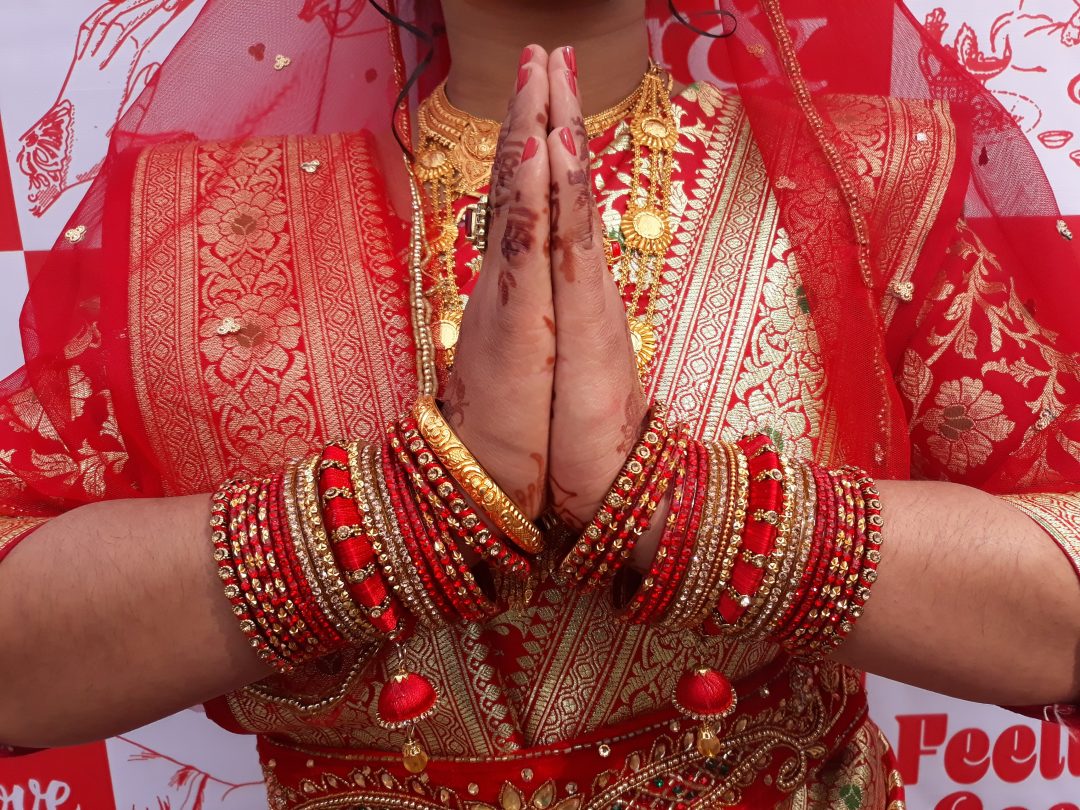The word Namaste is made up of two words Naman + Haste which means offering respects by bowing and using hands. Energy, as we know, flows from a higher level to lower level and Hinduism preaches this to us that if we want to get any good things from our elders than surrender yourself to them. When we bow we are at a lower plane and they are at a higher. It is natural that the energy or knowledge will flow from the higher level to the lower.
Each and every person has an energy level
When we shake hands with the opposite person then there is a contact and it is a well-known law of physics that energy distributes itself entirely over the surface when there is a contact. Imagine that I am having an energy level of + 100 and you are at an energy level of 50. When I shake hands with you, there is a contact between us and as a result our total energy becomes +150 which is distributed equally between both of us. My energy level is reduced to 75 and your energy level is increased to 75. So when we shake hands the chances are that your energy level reduces.
Respect to the GOD residing in the other person’s soul
When greeting a person with a Namaste there is no contact between you and the other person and your energy level remains constant. Namaste is also offering respect to the GOD residing in the other person’s soul. When a person greets Namaste he brings both the palms of the hands in such a way that the thumb of one palm is positioned on the thumb of the other palm, the index finger on the index, the middle finger on the middle, the ring finger on the ring and the little finger on the little. This is a form of posture which energizes the body. The concept of shaking hands has been adopted by humans to convey to the opposite party that I do not have any arms concealed and am open-handed and expect to befriend you.
 The concept of Namaste also means the same, but in addition, it gives respect to the GOD, the soul residing in the other individual. The concept of shaking hands is only among the equal. whereas a namaste can be wished by any individual to any individual. no bar on sex, age, caste, creed, etc. We cannot go and shake hands with the person whom we revere or hold in high esteem, for eg Professor or Head of the institution whereas we can offer our namaste as a mark of respect to the same individual who will be acknowledging it appreciably rather than shaking hands. Namaste can be offered at any time of the day, at any place and at any moment at the time of meeting the individual or at the time of parting. There is no greeting like a namaste which would put the receiver of the namaste in a pleasant mood and the giver also in a pleasant moment.
The concept of Namaste also means the same, but in addition, it gives respect to the GOD, the soul residing in the other individual. The concept of shaking hands is only among the equal. whereas a namaste can be wished by any individual to any individual. no bar on sex, age, caste, creed, etc. We cannot go and shake hands with the person whom we revere or hold in high esteem, for eg Professor or Head of the institution whereas we can offer our namaste as a mark of respect to the same individual who will be acknowledging it appreciably rather than shaking hands. Namaste can be offered at any time of the day, at any place and at any moment at the time of meeting the individual or at the time of parting. There is no greeting like a namaste which would put the receiver of the namaste in a pleasant mood and the giver also in a pleasant moment.






